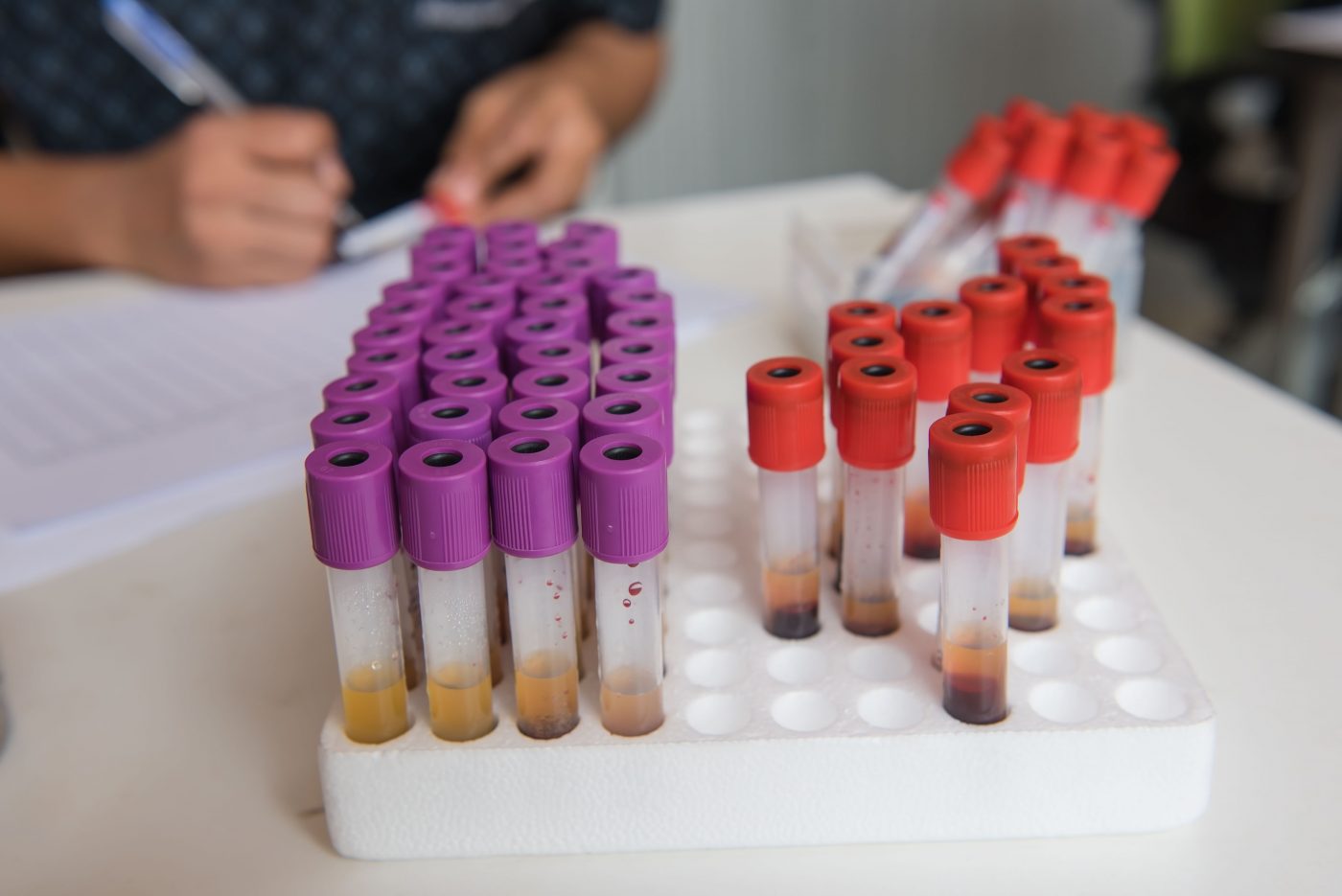Vasohibin-1 Levels May Serve as Biomarker for Lung, Skin Scarring

oatautta/Shutterstock
Higher-than-normal blood levels of the vasohibin-1 protein are associated with a greater risk of interstitial lung disease (ILD) and skin scarring among people with scleroderma, a study suggests.
The researchers said their findings show that vasohibin-1 is “a potential marker” for lung diseases such as pulmonary fibrosis in scleroderma.
The study, “Serum vasohibin‐1 levels: a potential marker of dermal and pulmonary fibrosis in systemic sclerosis,” was published in the journal Experimental Dermatology.
In scleroderma, also known as systemic sclerosis or SSc, the immune system reacts against blood vessels, leading to damage, chronic inflammation, and the activation of fibroblasts — the cells responsible for fibrosis, or scarring. Among proposed drivers of functional and structural abnormalities in blood vessels are molecules known as cytokines, chemokines, and cell adhesion proteins.
The protein vasohibin-1, known as VASH-1, is produced by endothelial cells, which line the inner wall of blood vessels. VASH-1 is known to suppress the formation of new blood vessels, a process called angiogenesis.
Evidence further indicates that it has an inhibitory effect on fibroblast activation.
Now, researchers in Japan assessed whether vasohibin-1 plays a role in scleroderma.
They measured VASH-1 levels in blood samples from 50 scleroderma patients, with a median age of 62, and 19 healthy participants, with a median age of 59, who served as controls. All of the healthy controls were female. The patients included 22 women with limited cutaneous scleroderma (lcSSc) and 28 people — 25 women and three men — with diffuse cutaneous disease (dcSSc). Overall, the median disease duration was three years.
The results showed that patients with dcSSc had significantly elevated levels of VASH-1 compared with controls. Specifically, the levels were 7.44 nanograms (ng)/mL versus 2.76 ng/mL. No differences were seen between healthy controls and people with lcSSc.
Next, the researchers investigated whether the levels of VASH-1 correlated with the severity of skin and lung fibrosis. A positive correlation was found between VASH-1 levels and skin thickness in patients, as assessed by the modified Rodnan’s skin score. That means that more vasohibin-1 is associated with greater skin thickness.
In addition, VASH-1 levels were inversely correlated with parameters of lung function, including vital capacity — how much air is exhaled after a deep breath — and predicted diffusion lung capacity for carbon monoxide, which is a measure of how well the lungs can transfer oxygen from their air sacs to the blood.
Those findings meant that high VASH-1 correlated with worse lung function. In fact, patients with ILD, a common complication of scleroderma, had significantly elevated levels of vasohibin-1 when compared with those without this group of lung disorders.
In contrast, having blood vessel involvement in the skin, including nailfold bleeding, pitting scars, and telangiectasia, did not impact VASH-1 levels. Of note, telangiectasias are small blood vessels that become dilated, or widened, near the surface of the skin.
The team then investigated how the levels of VASH-1 might change after treatment with intravenous (into-the-vein) cyclophosphamide or Tracleer (bosentan), two therapies used for SSc.
Among nine patients treated with six cycles of the immunosuppressant cyclophosphamide, results showed less VASH-1, from 8.76 ng/mL before to 5.81 ng/mL after treatment.
The six patients given Tracleer — all of whom have a history of digital ulcers — showed no significant differences in VASH-1 levels before and after treatment.
“These results suggest that VASH‐1 is linked to the disease process of SSc, which can be partially restored by IVCY [intravenous cyclophosphamide] treatment,” the investigators wrote.
Quantification of VASH-1 messenger RNA in skin sections of people with dcSSc showed that its levels were increased relative to controls. Messenger RNA is produced from DNA and contains information to generate proteins.
To tackle what is the major source of VASH-1, the researchers looked at a potential predisposing factor for scleroderma — deficiency of the Fli1 protein. The results, however, showed that “silencing” the gene coding for Fli1 in endothelial cells had no impact on VASH-1 levels.
This suggests that the contribution of VASH‐1 to blood vessel disease in scleroderma “is minimal,” according to the team, which is supported by the observed no correlation of blood VASH‐1 levels with vascular complications and Tracleer treatment.
Overall, “this is the first report demonstrating that serum [blood] VASH-1 levels serve as a marker of skin sclerosis and ILD in SSc,” the scientists wrote.
In addition, “although further studies with a larger number of patients and in vitro [lab] studies with SSc dermal fibroblasts are needed to corroborate our preliminary conclusion, we believe that these findings help us understand the potential roles of VASH-1 in SSc,” they concluded.






